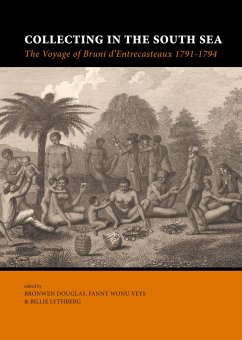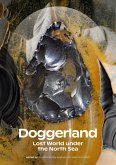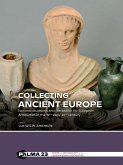This book is a study of 'collecting' undertaken by Joseph Antoine Bruni d'Entrecasteaux and his shipmates in Tasmania, the western Pacific Islands, and Indonesia. In 1791-1794 Bruni d'Entrecasteaux led a French naval expedition in search of the lost vessels of La Pérouse which had last been seen by Europeans at Botany Bay in March 1788. After Bruni d'Entrecasteaux died near the end of the voyage and the expedition collapsed in political disarray in Java, its collections and records were subsequently scattered or lost.
The book's core is a richly illustrated examination, analysis, and catalogue of a large array of ethnographic objects collected during the voyage, later dispersed, and recently identified in museums in France, Norway, the Netherlands, Switzerland, and the United States. The focus on artefacts is informed by a broad conception of collecting as grounded in encounters or exchanges with Indigenous protagonists and also as materialized in other genres-written accounts, vocabularies, and visual representations (drawings, engravings, and maps).
Historically, the book outlines the antecedents, occurrences, and aftermath of the voyage, including its location within the classic era of European scientific voyaging (1766-1840) and within contemporary colonial networks. Particular chapters trace the ambiguous histories of the extant collections. Ethnographically, contributors are alert to local settings, relationships, practices, and values; to Indigenous uses and significance of objects; to the reciprocal, dialogic nature of collecting; to local agency or innovation in exchanges; and to present implications of objects and their histories, especially for modern scholars and artists, both Indigenous and non-Indigenous.
Contents
Abbreviations
Preface and Acknowledgements
PART I: PROLOGUE
PART II: ARTEFACT COLLECTIONS
PART III: OTHER COLLECTIONS
PART IV: RE-INTERPRETATIONS AND TRANSFORMATIONS
PART V: EPILOGUE
PART VI: CATALOGUE
Contributors
Figures
References
Index
The book's core is a richly illustrated examination, analysis, and catalogue of a large array of ethnographic objects collected during the voyage, later dispersed, and recently identified in museums in France, Norway, the Netherlands, Switzerland, and the United States. The focus on artefacts is informed by a broad conception of collecting as grounded in encounters or exchanges with Indigenous protagonists and also as materialized in other genres-written accounts, vocabularies, and visual representations (drawings, engravings, and maps).
Historically, the book outlines the antecedents, occurrences, and aftermath of the voyage, including its location within the classic era of European scientific voyaging (1766-1840) and within contemporary colonial networks. Particular chapters trace the ambiguous histories of the extant collections. Ethnographically, contributors are alert to local settings, relationships, practices, and values; to Indigenous uses and significance of objects; to the reciprocal, dialogic nature of collecting; to local agency or innovation in exchanges; and to present implications of objects and their histories, especially for modern scholars and artists, both Indigenous and non-Indigenous.
Contents
Abbreviations
Preface and Acknowledgements
PART I: PROLOGUE
PART II: ARTEFACT COLLECTIONS
PART III: OTHER COLLECTIONS
PART IV: RE-INTERPRETATIONS AND TRANSFORMATIONS
PART V: EPILOGUE
PART VI: CATALOGUE
Contributors
Figures
References
Index








